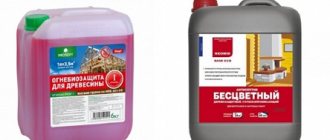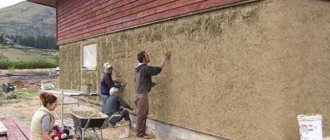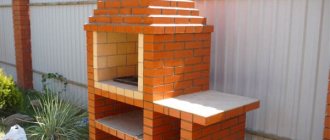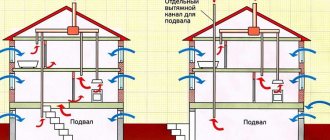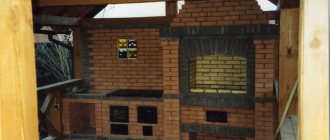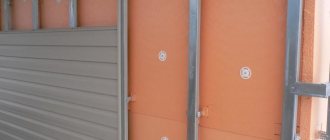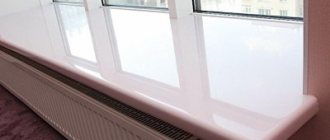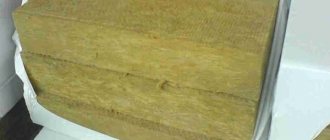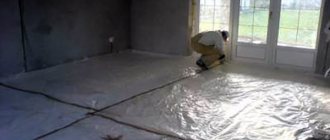Sawdust is waste remaining during the woodworking process and is a mixture of wood shavings and dust. It should be noted their versatility. They are actively used in agriculture, gardening and other areas. In construction, the material is used as insulation.
Its thermal insulation properties have been known for quite some time. Our ancestors also used a mixture of sawdust and clay when building wooden houses.
The world does not stand still. Many materials have been developed as thermal insulation: expanded polystyrene, mineral wool, polystyrene foam, ecowool, foam insulation, etc.
It would seem that the method of insulation with sawdust, as a relic of the past, should have exhausted itself long ago. But even now this is a common method of thermal insulation of premises.
Is it worth it to insulate walls with sawdust?
It is human nature to strive for perfection.
And this desire helps us develop further. It manifests itself in all areas, including construction. It’s impossible to count how many special materials for insulation have already been created; there is even foam for insulating walls. Mineral wool, expanded polystyrene, penoizol, foamed polyethylene - this is just a small list of the huge variety that is presented on the market.
House insulated with sawdust and cement mortar
However, we should not forget about time-tested methods. For example, about insulating frame buildings with sawdust. This process will now be discussed.
Advantages of sawdust concrete
- Sawdust concrete can easily be made independently;
- Light weight allows you to save time and money on the construction of a large-scale foundation;
- Like gas silicate or foam blocks, sawdust concrete is extremely easy to process. If necessary, you can easily saw off the excess from it in order to fit it perfectly for masonry;
- The material has high vapor permeability, which allows the walls to “breathe”;
- Low thermal conductivity and resistance to moisture is achieved by changing the percentage of organic and inorganic components;
- Ecological cleanliness. All components of sawdust concrete are of natural origin. Its safety is much higher than that of cinder blocks;
- Fire resistance;
- Possibility of independent work without the need to involve professional builders. Naturally, for this you should adhere to the rules;
- When insulating a building or reconstructing it using sawdust concrete, it is not necessary to strengthen the foundation;
- The material has a long service life. And in houses built from it according to all the rules, it is not only warm, but also has very good sound insulation.
Making insulation from sawdust with your own hands
Scheme of floor insulation with sawdust.
With your own hands, you can prepare sawdust-based insulation in two versions: sawdust concrete or wood concrete. The first is a mixture of sawdust and lime, sand, cement and water.
In composition it is close to cement-sand mortar, but does not become as hard when hardened. This composition is used to make fire-resistant blocks.
When using it, you will need to provide additional protection from moisture. If the floor is thermally insulated, then roofing felt can be laid on top for this purpose.
Such blocks are often used for the construction of ancillary buildings on the site.
To prepare 1 cubic meter of solution from which you will make blocks, you will need:
- sawdust – 200-250 kg;
- sand – 1500 kg;
- cement – 1200 kg;
- lime – 600 kg;
- water – 250-350 l.
The amount of water may vary due to the fact that the moisture content of the materials may vary. Therefore, for each individual case, its optimal amount is determined individually. All components must be mixed very thoroughly. When the solution is ready, it needs to be laid out in block molds. To ensure that the sawdust concrete completely fills the entire mold and there are no voids left in the future block, you need to carefully compact it in the mold. To do this, you need to intensively tap on the top of the form, this will create the necessary vibrations.
Scheme for preparing insulation from sawdust and cement.
Blocks must be made several months before the expected start of construction. Only in this case will they have time to acquire their basic qualities. Fresh blocks need to be sprayed with water in the summer. If they are stored outside and the weather is rainy, then you need to cover the blocks with roofing felt. A wall lined with sawdust concrete blocks can be plastered in about 4-6 months. Before this, the walls must be well moistened.
Insulation such as wood concrete can also be made from sawdust. The basis for its production is sawdust, cement and chemical additives that give the mixture certain characteristics. This heat-insulating material is much lighter than sawdust concrete. In industrial conditions, wood concrete is made in the form of slabs, which can be used not only for insulation, but also for sound insulation. They can be laid on the floor or mounted on walls.
Wood concrete can be produced not only in industrial conditions. If you do it yourself, you will save significantly on thermal insulation. To prepare it, you must soak the sawdust with an antiseptic and let it dry thoroughly. Next, you need to mix sawdust with slaked lime, which will make the insulation unattractive to rodents. The mass of lime used should be 10 times less than the mass of sawdust. You need to mix the components in a large container.
The resulting mixture can be used as a ready-made insulation material, pouring it into the cavity of the structure in a layer about 25 cm thick. This mixture can simply be poured onto the floor. If you are insulating walls, then so that the mixture does not settle and the thermal insulation layer does not collapse, you need to eliminate its flowability. In this case, it is recommended not to dry the sawdust, but to use slightly damp ones.
Add a little gypsum to the mixture, about half as much as lime. Prepare the mixture with gypsum in small portions so that it does not harden ahead of time; you can use cement in the same amount instead of gypsum. Both cement and gypsum will draw moisture out of the sawdust.
Economical thermal insulation
The cost of building your own home (not to mention purchasing a plot for it) can put a dent in almost any budget. Therefore, in private construction, preference is often given to more economical options for materials.
The cost of modern insulation makes you think about how to save on this expense item when building a house. The simplest sawdust can be used for thermal insulation of a house, while the cost of this material will be minimal. You can purchase them at a very low price at any sawmill.
Please note that sawdust cannot be used unprocessed, since this material, like any other natural material, is prone to rotting.
It is necessary to treat them with special compounds that can prevent this. In addition, it is also necessary to ensure their protection from rodents and fire. You can mix sawdust with clay, lime or cement. As a result, you will have insulation ready for use. It can be used to insulate roofs, floors and walls.
Sawdust concrete. Sawdust and composition. Advantages and disadvantages. At home
Sawdust concrete is a lightweight concrete consisting of a mixture of water, cement, lime, clay, sand and sawdust. It is used for the production of building blocks and the construction of monolithic buildings. The composition of the material is similar to wood concrete, but contains finer wood filler. The use of sawdust concrete is environmentally feasible, since it is completely safe, meets sanitary and hygienic requirements, and is also characterized by increased thermal insulation and sound insulation.
Where is sawdust concrete used?
The material is widely used in the construction of low-rise residential and non-residential buildings. Most often it is used in the construction of country houses, garages, and outbuildings, the facades of which are planned to be plastered, covered with siding, and clapboard.
The load-bearing characteristics of the material exclude the possibility of its use for the construction of multi-story buildings. Sawdust concrete can be used to build boxes up to 2 floors high. To use it when laying taller buildings, precise engineering calculations are required, as well as pouring a reinforced concrete reinforced belt along the entire contour.
A rough floor screed is often made from sawdust concrete. For this purpose, material of small grades M5 and M10 is used. Plank floor logs, laminate, parquet, etc. can be laid on top of the screed. The screed is compatible with water and electric heated floor systems.
Advantages of sawdust concrete
The main advantage of the material is the use of recycled materials in its production. At the same time, sawdust in concrete does not burn or rot, and therefore does not have its main disadvantages. Their use in the production of sawdust concrete makes it cheap and accessible.
Ceiling protection
Most often, ceiling insulation with sawdust is performed in private homes and outbuildings.
The surface on which the thermal insulation layer will be laid must be prepared. To do this, all cracks are carefully covered with clay. They can also be treated with polyurethane foam. If the building has a chimney, then it must be prepared as well. The area around the chimney is lined with non-combustible materials (slag).
The ceiling is insulated from the attic side. The mixture of sawdust is poured over the entire area, carefully compacted and covered with boards.
Insulation of rooms with sawdust
Trusting modern technologies for insulating rooms and materials like polystyrene foam or mineral wool, many people have forgotten about such a cheap and accessible material as sawdust. But in vain.
Insulation of a private household can be done for very modest money using sawdust concrete or wood concrete, made with your own hands using improvised means. In professional construction, these materials are not used due to the additional costs of preparing wood chips (processing to protect against putrefactive processes, fire and encroachment of sawdust by rodents). But in private households, it is advantageous to use sawdust concrete and wood concrete for insulation and soundproofing of walls, ceilings, and floors.
Sawdust concrete
Cement, sand, lime, sawdust, water are the main components of sawdust concrete. This material makes it possible not only to provide high-quality protection from the external environment, but even to produce fire-resistant blocks with characteristics no worse than cinder blocks. Of course, not everyone will decide to build a house from such blocks, but utility rooms are built quite often - the quality is no worse than traditional materials, but the price is significantly lower.
True, such blocks have a small drawback - they need protection from moisture. Therefore, when using them in flooring, roofing felt is first laid on the insulation, and then the floor covering.
To obtain 1 m³ of sawdust concrete you need 1200 kg of cement, 1500 kg of sand, 600 kg of lime and 220-250 kg of sawdust. The amount of water, ranging from 250-350 liters, depends on the total humidity of all components.
After thoroughly mixing the ingredients, transfer the mixture into molds. It’s good if the farm has a vibrating stand, which will help to thoroughly distribute and compact the prepared solution. In the absence of a vibration stand, you can tamp manually, intensively, simulating a vibration stand, tapping on the shape. This should be done to fill the molds more densely and uniformly with the solution.
In the summer, during the heat, the newly prepared blocks are sprayed with water. In the rain they need to be covered with something. It could be roofing felt or the same roofing felt
Important! Only manufactured and dried blocks cannot be used. Sawdust concrete acquires maximum strength, as well as its other necessary qualities, only after a few months. Therefore, if construction is planned in the spring, the blocks are made in the fall; if in the fall, then in the spring.
If necessary, plaster the finished surface no earlier than 4-6 months after installation. Before starting work, sawdust concrete must be wetted.
Arbolit
The material is similar to the previous one, with a slightly modified composition (wood chips or crushed straw, cement, chemical additives), due to which the finished products, blocks or slabs, have less mass. It is not only an excellent insulation material, but also a material for soundproofing rooms.
The production of wood concrete should begin by treating the filler (sawdust) with an antiseptic and then drying it. To repel rodents, wood chips are mixed with slaked lime - 1 part lime, 9 parts sawdust.
The mixture prepared in this way can already serve as a material for insulation. In the cavity it is filled with a layer whose thickness ranges from 20 to 30 centimeters.
For ease of use, the mixing container must be of sufficient size.
If it is necessary to prevent shrinkage of the insulation, the sawdust is left wet, adding cement or gypsum to it (about 5% of the amount of chips).
The mass must be prepared quickly, in small portions. The reason for this is that gypsum quickly hardens in contact with wet filler. With large volumes, you may not have time to lay all the wood concrete.
This type of insulation is most in demand in summer cottages. Cheap housing requires cheap materials.
Before preparing the mixture, you need to decide on a measuring container. That is, how all components will be measured. Alternatively, you can take a bucket. Then for 1 bucket of lime take 10 buckets of sawdust and half a bucket of cement or gypsum. The antiseptic in this solution can be boric acid dissolved in 5-10 liters of water (depending on the total humidity of all components). The prepared mixture is poured with an antiseptic from a watering can.
To improve strength, but with a decrease in thermal insulation properties, you can add more binder material, cement or gypsum.
Attention! A properly prepared mixture, when squeezed in your hand, does not crumble, but remains in a lump.
The finished insulation is placed in the required places and compacted with a shovel. After a week or two, when everything is thoroughly dry, the insulation is checked for the formation of voids. Any defects that appear are repaired with the same material.
Clay and sawdust - roof insulation
Practical, cheap, easy to implement, one might say an old-fashioned way of not only insulating the ceiling, but also excellent protection from fire. This can be done by a person who knows nothing about construction.
Where to begin?
First, the ceiling is prepared. Since the mixture being prepared is liquid, all gaps between adjacent boards, planks and walls are sealed. If it's quick and simple, you can lay any waterproof film on the ceiling. To prevent the film from “driving,” you should use a stapler and pin it to the tree.
Preparing the solution
First, clay is poured into a concrete mixer or barrel and filled with water. This will be clay water. The clay must sit in the barrel to dissolve. There is no need to wait in the concrete mixer - turn it on and stir. Sawdust is poured into the finished liquid clay until the required mass is obtained.
Application of the solution
The mixture is applied with a thickness of no more than 10 centimeters. When smoothing the layer and compacting it, you can use a flat board. There are no more tricks provided.
After the applied solution has dried, it is necessary to check the surface for cracks. If they have formed, cover them with the same clay.
Some owners practice insulating the ceiling with sawdust without cement. The method is not much worse, but requires additional protection from rodents in the form of broken glass or tobacco leaves.
Properties
Wood shavings as an insulating material have a number of positive and negative characteristics.
Among the advantages are the following:
- good thermal insulation qualities, since the resin released by the shavings conducts heat poorly;
- environmental friendliness, sawdust is a natural material, therefore it does not contain harmful chemicals and does not cause allergies;
- low cost, because it is a production waste, many woodworking enterprises give it away almost for nothing.
The main disadvantages of sawdust:
- high fire hazard, ignite very quickly;
- when used in their pure form, they can harbor insects and rodents;
- when exposed to moisture they are susceptible to rotting.
Due to significant disadvantages, sawdust is practically not used in its pure form as insulation. To eliminate possible unpleasant consequences, wood shavings are mixed with lime, clay, cement or gypsum. The resulting mixture is sprayed with vitriol or other antiseptic solution.
As a result, the resulting material burns poorly and also repels rodents and insects.
DIY sawdust insulation - sawdust concrete and wood concrete
At home, you can prepare sawdust concrete and wood concrete with your own hands. Sawdust concrete is a mixture of sawdust, cement, sand, lime and water. From this mixture you can make fire-resistant blocks that are no worse than cinder blocks. However, such insulation needs protection from moisture. If you use such blocks to insulate the floor, it is recommended to lay a layer of roofing material on top of it, and only then lay the floor coverings. Sawdust concrete blocks are often used for the construction of utility rooms and sheds.
To make it you will need (per cubic meter) 1200 kg of cement, 1500 kg of sand, 600 kg of lime and 220-250 kg of sawdust. The amount of water required for mixing sawdust concrete varies, depending on the moisture content of the materials; it ranges from 250 to 350 liters. We knead and place the thoroughly mixed mass into prepared forms. We compact the mass properly and vigorously tap the surface of the mold for several minutes so that vibration in the sawdust concrete fills all the voids and it sinks well.
The resulting blocks should not be used immediately after production - sawdust concrete will acquire its necessary qualities (frost resistance, strength) in a few months, so if you plan to build in the fall, prepare the blocks in the spring.
Fresh sawdust concrete should be sprinkled with water in the summer and covered with roofing felt during heavy rains. Block walls should be plastered 4-6 months after installation. It is important to moisten the walls before plastering. Back in the last century, wood concrete was developed and approved for use at the state level - a mixture of cement, wood chips and chemical additives. It is much lighter than sawdust concrete; at the industrial level it is used in the form of finished slabs not only as insulation, but also as a soundproofing material.
Anyone can make such insulation from sawdust with their own hands, but the whole process will cost much less than foam insulation. To do this, first prepare the material: treat the sawdust with an antiseptic solution, dry it thoroughly and place it with slaked lime. It is lime that will protect the insulation from rodents. You don’t need a lot of lime – about 10% by weight of sawdust. For ease of mixing, the materials should be poured into a large container. This mixture can already be used for insulation, filling the cavity with a layer of 20-30 cm.
However, it would not be superfluous to eliminate the flowability of such insulation in order to prevent its settlement in the future. If you decide to act in this way, you do not need to dry the sawdust; on the contrary, they should be slightly damp. Gypsum should also be added to the resulting mixture of sawdust and lime, no more than 5% in proportion to sawdust. This mass should be prepared in small portions, since the gypsum sets very quickly, and the material can harden even before you prepare the place for laying the insulation. If there is no gypsum, cement can replace it in the same proportions. Gypsum and cement will draw out excess moisture from the sawdust.
Price
Here I didn’t consider everything as meticulously as with the roof of my house, where in the estimate you can see everything from start to finish, down to every screw and nail. I have already mentioned the cost of basic materials in the text of the article. And based on the final amount, I will say that I had a budget of 25,000 rubles. on the floors, but even there are still 2 tr left. (i.e. this is all together with delivery). Floor area - 31.4 sq. m. (minus the foundation tape, it protrudes by 30 cm.)
Wooden stone, or stone wood, as sawdust concrete is called, is also a fairly cheap material. Sawdust concrete, the price of which is low, is considered the most affordable when compared with other materials. For example, one wall block, which has dimensions of 390x190x188 mm, made from sand and screenings, costs approximately 23 rubles on the market. A stone that has the same dimensions, but is already made of sawdust concrete, will cost 3-4 rubles less, and at the same time it is lighter and warmer.
By the way, it can replace 7 bricks (the cost of one is 5-7 rubles). It is easy to calculate that a wall made of a mixture of sawdust and concrete will cost 2.5 times less than a brick one. In other words, to build a house box 8 by 8 meters, you will need 20,000 bricks, the owner will have to pay 140 thousand rubles only for stones, pay the same amount to craftsmen for masonry, and 40,000 rubles for sand and cement. If you use sawdust concrete, the price of such a building will vary from 100 to 150 thousand rubles. Agree, tangible benefits.
Let’s compare sawdust concrete with other materials: the price per cube of brick will be 3 times higher than the cost of a cube of cinder block, 2 times higher than the cost of a cube of natural stone, and 1.5 times higher than the cost of a cinder block.
How to insulate walls with sawdust
Insulating walls with sawdust is considered an effective method of heat preservation and noise protection. We offer a step-by-step description of the popular thermal insulation method.
- To ensure fire safety, all potentially hazardous areas are covered with non-flammable material. We are talking about sockets, switches, chimneys, heating system wiring. Electrical wires are placed in metal tubes with a thickness of at least 3 mm .
- When insulating walls, it is necessary to construct a frame to hold the insulation. The frame consists of wooden slats with sheathing.
- Small wood shavings should be dry and free of mold. Among all the waste from sawing and processing wood, coarse sawdust is suitable for insulation . The thermal insulation mixture is prepared according to the principle described in the previous section; the thickness and proportions of cement, water, lime and boric acid are also given there.
- After mixing, the insulation is poured into the frame to the level of the sheathing. A small construction secret is to sufficiently compact and compact the insulating material to prevent subsidence of the layer in the future.
If you are interested in insulating a frame house with sawdust in the form of arbolite slabs, we will tell you how to make and install them. First, you should soak dry sawdust in copper sulfate . Afterwards, combine with cement in a ratio of 10 to 1. The mixed components are diluted with water until a dense mass is obtained that does not disintegrate after squeezing in a fist, is wet to the touch, but does not release moisture. To properly insulate the walls, first install a layer of waterproofing , and apply a solution with sawdust on top of it.
Main stages of work
Table of characteristics of materials for wall insulation.
To ensure good thermal insulation of walls in country houses and outbuildings (bathhouses), sawdust diluted with lime is actively used. This substance acts as an excellent antiseptic and is unattractive to rodents. The prepared composition is poured onto the waterproofing layer little by little, after which it is well rolled. The result is an excellent community with high-quality thermal insulation.
The insulation of walls with sawdust is associated with their finishing with plywood or lining. Glassine is placed under them. The outside is covered with edged boards or moisture-resistant plywood. After this, a ventilation system is installed. It is done as follows: take a beam with a cross-section of 40×40 mm, which helps to create the appropriate gap. Insulation of the walls from the outside is completed by cladding with siding or block house.
The process of finishing the partitions of a house and a bathhouse with the selected raw materials should be regulated by a certain thickness of the walls, which must correspond to 15-17 cm. The thickness of the ceiling is 25 cm. As a result of such insulation, a pleasant and healthy microclimate will be maintained in the room in any season.
The area dimensions of such buildings are 35-40 sq.m. Heating the stove twice a day will help maintain a stable temperature in the room. If you live permanently in a building, the insulation of the walls should be increased slightly by changing their thickness. To do this, it is necessary to install a complementary base of boards; it is also important to fill this layer with a “warm” composition. Such a building is not afraid of the most severe frosts.
Insulation of walls with sawdust must be inextricably linked with strict adherence to fire and electrical safety standards. The chimney location points are equipped with special separation spaces, which are covered with non-combustible materials. The electrical wiring must be located on the outside, then, as a result of a short circuit, the insulation layer will not be able to catch fire. It is placed in metal cases in the form of tubes, their thickness should be more than 3 mm. The room in which the main work takes place should be thoroughly ventilated.
Building materials using sawdust
Sawdust is used not only for insulation of walls and other parts of the attic, but also for the production of building materials with good insulating characteristics.
Sawdust concrete
Sawdust concrete contains fine shavings, lime, cement and sand. Its density depends on the ratio of the components. Depending on the technical characteristics, the product is used for the construction and insulation of internal and external walls of dachas, cottages, residential buildings, attics, garages, and outbuildings. Fences or pillars for them are built from sawdust concrete and used to strengthen the foundation.
The material is well processed; various decorative materials can be used for its finishing. If it is manufactured in accordance with technological requirements, then its properties include high fire resistance and resistance to low temperatures. Sawdust concrete provides good sound insulation of attic walls, is easy and quick to install, has a low cost, but slowly gains strength and requires reliable protection from moisture.
Arbolit
Arbolite blocks are made from a mixture of wood chips, cement, and sawdust. The advantage of the product is its high thermal insulation property, strength, and fire resistance of the walls. The block is easy to process. Wood concrete does not crack, even if it is not stored under a canopy, but is subject to slight shrinkage. The product is relatively light and environmentally friendly.
The disadvantage is the inaccuracy of the geometric shape and low resistance to moisture. For finishing wood concrete, only those products that can allow air to pass through are used.
To understand which insulation is best for the attic, you need to decide on its purpose and seasonality of use. Using sawdust, you can well insulate a given room and ensure its impeccable technical characteristics for many years.
